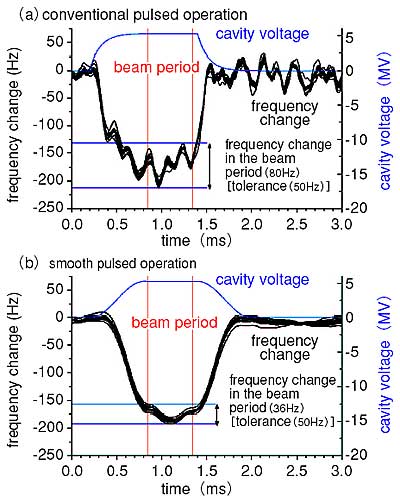Higher efficiency and higher field is expected for a superconducting (SC) accelerator, which is a most promising option for the accelerator driven nuclear transmutation systems. The SC proton linac is also planned in the High Intensity Proton Accelerator Project promoted by JAERI/KEK.
The SC cavity is deformed by its own electromagnetic force (Lorentz force), which results in a resonant frequency change. In pulsed operation, the dynamic Lorentz force causes mechanical vibration and resonant frequency fluctuation. Analysis is necessary to achieve stable acceleration in pulsed operation for the High Intensity Proton Accelerator Project.
We developed a new model for the dynamic analysis of the SC cavity in pulsed operation. In the model, the dynamic deformation of the cavity is obtained as the sum of the mechanical vibration modes and is converted to a resonant frequency change. Fig. 5-1 shows the stable deformation caused by the Lorentz force and typical mechanical modes for the 7-cell SC cavity. The mechanical modes are characterized by deformation type; low frequency multi-cell modes, high frequency single-cell modes, and tuner & beam pipe modes.
The results of the analysis using this model indicate that in the conventional pulsed operation, in which the cavity voltage increases and decreases exponentially, single-cell modes are excited and the resonant frequency fluctuates in the beam period (Fig. 5-1). On the other hand, in smooth pulsed operation, in which the cavity voltage increases and decreases in a cosine-shape, the resonant frequency is stabilized in the beam period (Fig. 5-2). In this operation method, the frequency fluctuation in the beam period is less than the required tolerance of 50 Hz. |


